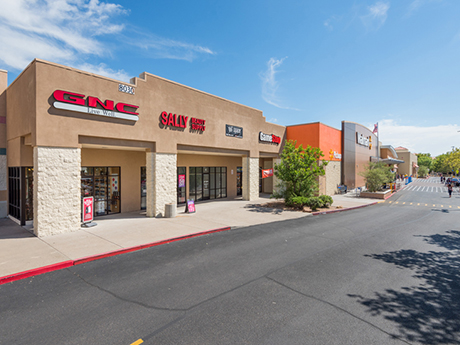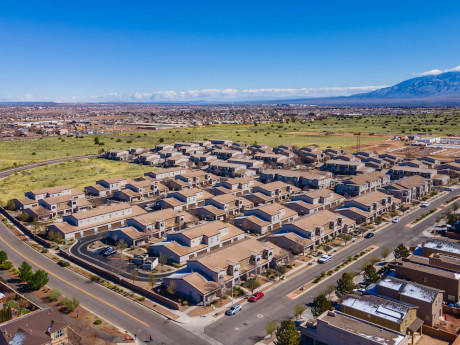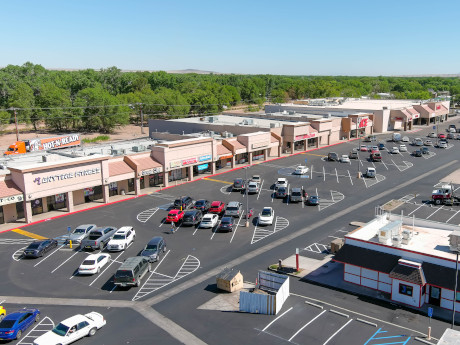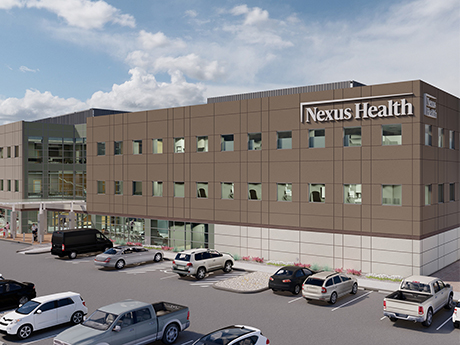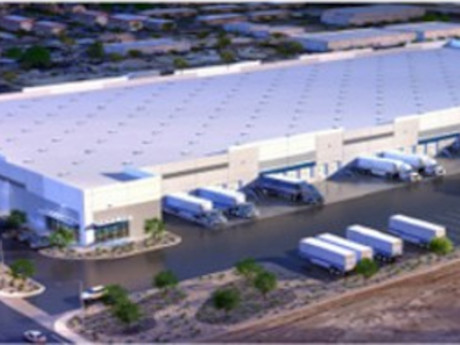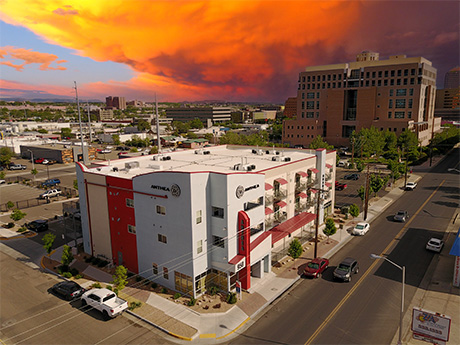— By Anthony Johnson and A.J. Johnson of Pegasus Retail — Looking back on the market sentiment at the start of 2024, the mantra was “Survive ‘til 25.” Now, halfway through 2025, it’s clear that the record-breaking cap rate sales of 2021 and 2022 are firmly in the rearview. Speculative development is reserved for those with a generational outlook, and high interest rates are the new normal. While that may seem bleak, for those who’ve weathered the storm, it feels like a breath of fresh air. The market has reset. Seller and buyer expectations are realigning. Landlords and tenants are exploring new deals in a more stable environment. And smart developers are dusting off models and cautiously getting back to work. The construction hiatus of recent years has benefited owners of existing product. Tenants, fueled by Wall Street growth expectations, had to get creative. We now see many national retailers occupying second and third generation retail space that they’d historically passed in favor of shinier and newer projects. Many neighborhood centers that were 50 percent vacant at the onset of the pandemic are now close to fully leased. A surprising but welcome shift. This outcome, partly driven by the lack …
Market Reports
— By Anthony Johnson, President, Pegasus Group and Western Regional Director, X Team Retail Advisors; and AJ Johnson, Associate Broker, Pegasus Group — Looking back on the Albuquerque retail market for 2022 and 2023, I have to say that 2022 was the height of our boom in terms of the sale/lease of shopping center and freestanding pad sales, built-to-suit opportunities and redevelopment opportunities. The top consumers of these product types were chicken (QSR), coffee, car washes and cannabis, or as we affectionately called them, the “Four C’s.” Due to the sheer amount of activity in the pad user market, underutilized was a key word during this time. We saw vacant pad sites that were once considered unleasable or unsellable, perking the interest of investors, tenants and developers. By 2022 the negative effects of the pandemic had subsided, which resulted in the most robust year we’ve ever seen in terms of pad sales/leases. I’ve never seen anything like it. It was like a crescendo… and then, the “music” stopped. It was February of 2023 when the music started to get fainter. By August 2023, the music stopped, and now we’re seeing the aftermath of this. Meaning, many of the pad sites …
— By Robert Gallegos, Senior Vice President, The Mogharebi Group — New Mexico is rapidly becoming an important multifamily market for both investors and developers as the state experiences explosive job and population growth, which is expected to continue on an upward trajectory over the next five to 10 years. While Albuquerque remains the most targeted multifamily market in the state, it is worth noting that the tertiary market of Santa Teresa — near El Paso and the Mexico border — is becoming a hotbed for multifamily investment. Santa Teresa is a key inland port serving as a strategic focal point for intermodal shipments in the Southwestern U.S., with more than 6 million square feet of industrial space in use and nearly 1 million square feet under construction. As more jobs flood into New Mexico, the demand for quality rental housing will continue to far outstrip supply. With a population of more than half a million people and counting, it is no wonder Albuquerque is seeing the bulk of investment activity. The city has drawn an influx of new residents thanks to its diverse economy, relatively affordable cost of living and quality of life. According to Numbeo, one of the largest cost-of-living …
— By Anthony Johnson, AJ Johnson and Chris Fiello, Pegasus Group — New Mexico is no different than the rest of the nation and is not immune to some of the same symptoms that are taxing the national retail market. However, New Mexico retail is also showing signs of resilience as it reshapes itself and finds ways to weather the storms of high interest rates, major brand closures, economic uncertainty and crime. As of now, the big issue is in the theft and resale of retail goods. Indeed, the problem of brazen theft — which is seen in countless cites in the nation — has led New Mexico Gov. Lujan Grisham to announce the revival of the Governor’s Organized Crime Prevention Commission. The hopes are to crackdown on this behavior, which is having a detrimental impact on the bottom line for New Mexico businesses, especially small ones. This onslaught of petty shoplifting to organized sprees of large-scale theft has caused retailers large and small to exit locations. Target, for example, announced in May that it was preparing for a loss of half a billion dollars this year because of rising theft. In 2023, New Mexico saw multiple store closures, including several …
Higher-Quality Properties, Downsizing Drive Strong Office Leasing Activity in New Mexico
by Jeff Shaw
— By John Ransom, Senior Vice President and Principal, Colliers — Albuquerque MSA office users continue to closely evaluate real estate decisions post-pandemic. The leasing trend is pivoting toward quality properties with landlords upgrading their building systems, security and amenity offerings. Tenant improvement costs are central to lease negotiations, so matching a tenant with space that requires the least amount of renovations to meet their needs is critical for both the tenant and the landlord to make a deal. In any event, tenants often have to share in the TI costs with upfront capital or amortizing a portion of the construction expense into the rental rate. This leads to longer lease terms and additional lease securitization requirements. Beneficial occupancy and other creative incentives are also being offered by landlords in lieu of additional tenant improvement dollars. Companies looking to downsize are considering a trade up in building/space quality. The upgrade has little impact to overall real estate expense, while improving the working conditions for their employees and ability to recruit in a competitive hiring climate. The office vacancy rate has steadily decreased to about 12 percent from a high of 20 percent five years ago. The bulk of vacancies are …
— By Will Strong, Executive Vice Chair, Industrial Capital Markets, Cushman & Wakefield — Albuquerque has emerged as a vibrant hub for industrial development, showcasing a thriving economy and a favorable business climate. With its strategic location, robust infrastructure and supportive policies, the city has become an attractive destination for ecommerce and logistics companies seeking growth and expansion. Situated in the heart of the Southwest, Albuquerque enjoys a prime location that serves as a gateway to various markets. It is conveniently connected to major transportation networks, including interstates 25 and 40, making it accessible for shipping goods across the region. The city is served by the Albuquerque International Sunport, facilitating efficientair freight and business travel. The market’s availability of reliable utilities, such as water, electricity and high-speed internet, further strengthens the city’s industrial ecosystem. The Albuquerque industrial market grew more than 300,000 square feet in the past year. Demand has been strong enough to continually outpace deliveries, enabling vacancies to tighten below the historical average, according to CoStar. Vacancies have fallen to just 2.4 percent, well below the national average of 4.5 percent. Albuquerque has a diversified base of industries, led by aerospace, high-tech manufacturing, distribution and logistics, technology and …
By Alex Pulliam, Land & Industrial Advisor, NAI SunVista It’s been a long time coming. Albuquerque hasn’t built speculative distribution warehouses in nearly two decades. However, the recent strength of the market is giving developers confidence to break ground – and investors are paying attention. Industrial activity has been lively, thanks to accelerated macro trends from the pandemic, as well as the legalization of recreational cannabis. Albuquerque’s industrial vacancy rates have remained below 1 percent for over two quarters. Prior to that, vacancy rates hovered around a then “historic low” in the 2 percent range since September 2019. The demand from users has continued to climb and tenants are facing lease rate increases. While needing more speculative warehouses should be a matter of basic economics, it is not always easy to build in a tertiary market that lacks the memory of growth. Historically, Albuquerque would only secure a few 50,000-square-foot users per year, along with the occasional 100,000-plus-square-foot user. This deterred developers from taking a chance on new construction. But times are changing. Large tenants are taking note of Albuquerque’s access, affordability and workforce, while existing users are seeking modern buildings for efficiency and growth. These factors, combined with rental rate …
Companies, Investors Court New Mexico’s Multifamily By Todd Clarke, CEO, NM Apartment Advisors Strong employment and changing post-pandemic lifestyles have led to a surge of demand for New Mexico’s multifamily rental market. Investments made more than a decade ago are paying off from SpacePort NM and the NM Rail Runner, as well as the film and television industries, which have made New Mexico the third best place to film in the country behind Los Angeles and New York. Although Santa Fe — the fifth best international destination and oldest state capital — remains undeserved by more than 6,484 units, the market is on track to deliver 1,500-plus units. This is well ahead of Albuquerque’s less than 1,000 new units. More development will hopefully continue, thanks to a new Integrated Dynamic Ordinance (IDO, or zoning), recent investments in mass transit expansion lines and a vibrant tech eco-system at the Innovation District in downtown Albuquerque. Several major employers have announced expansions in the market, including Intel (750 jobs), Netflix (3,000 jobs), Facebook/Meta (35 IT jobs, 1,500 construction jobs) and Amazon (four distribution facilities totaling more than 3,500 new jobs). Based on historic benchmarks, this creates an acute housing shortage in Albuquerque. Recent …
By Billy Eagle and Erik Olson, Senior Vice Presidents of Investment Properties, Multifamily, CBRE In Albuquerque, New Mexico’s largest city, multifamily demand remains high. Rents have steadily increased, though multifamily development remains sluggish due to the lack of developable land sites and geographic constraints. Most other New Mexico cities are also seeing a small pipeline of new multifamily projects due to increased material costs. However, contrary to other cities in New Mexico, the northern New Mexico City of Santa Fe has seen a boom in multifamily development. Santa Fe’s highly resilient and fundamentally sound multifamily market is highlighted throughout the pandemic. The state capitol is renowned for its Southwest culture, luxurious resorts and world-class art markets. Its economic drivers include, but are not limited to, tourism (more than 1 million visitors per year), government (Los Alamos National Labs is located nearby), medical and boutique financial services. The Santa Fe apartment market had record occupancies at 96.91 percent in January 2021 and year-over-year rent growth of 7.6 percent. The average weighted rent was $1,102 per month among a total of 3,385 market-rate units. Nearly 16 months later, they are averaging almost $1,300 per month, an 18 percent increase. Santa Fe also added 503 market-rate units to …
By Tim With, Senior Vice President, Colliers The amount of empty space in New Mexico’s industrial market has shrunk to unforeseen levels. Albuquerque, the state’s largest MSA, reported a total of 41.5 million square feet of industrial space and only a 2.4 percent vacancy rate at the end of 2020. Absorption levels have increased through the first quarter of 2021, and available inventory is becoming difficult to find as the vacancy is down to 1.9 percent. Albuquerque has been on the brink of new construction for some time, with the need for new Class A space far outweighing the current availability. The nationwide industrial supply posted record deliveries in 2020 that totaled more than 300 million square feet. This represents about a 2 percent year-over-year increase in total inventory. In comparison, Albuquerque’s inventory grew by less than 1 percent over the past five years, while vacancy rates decreased by almost 550 basis points. Most new construction has been build-to-suit activity. Tenants, meanwhile, are challenged with a lack of choice as a considerable amount of the existing vacant space is functionally obsolete. The average overall asking lease rates for existing warehouse/distribution space was $6.58 per square foot, triple net, at the end of …
Newer Posts


